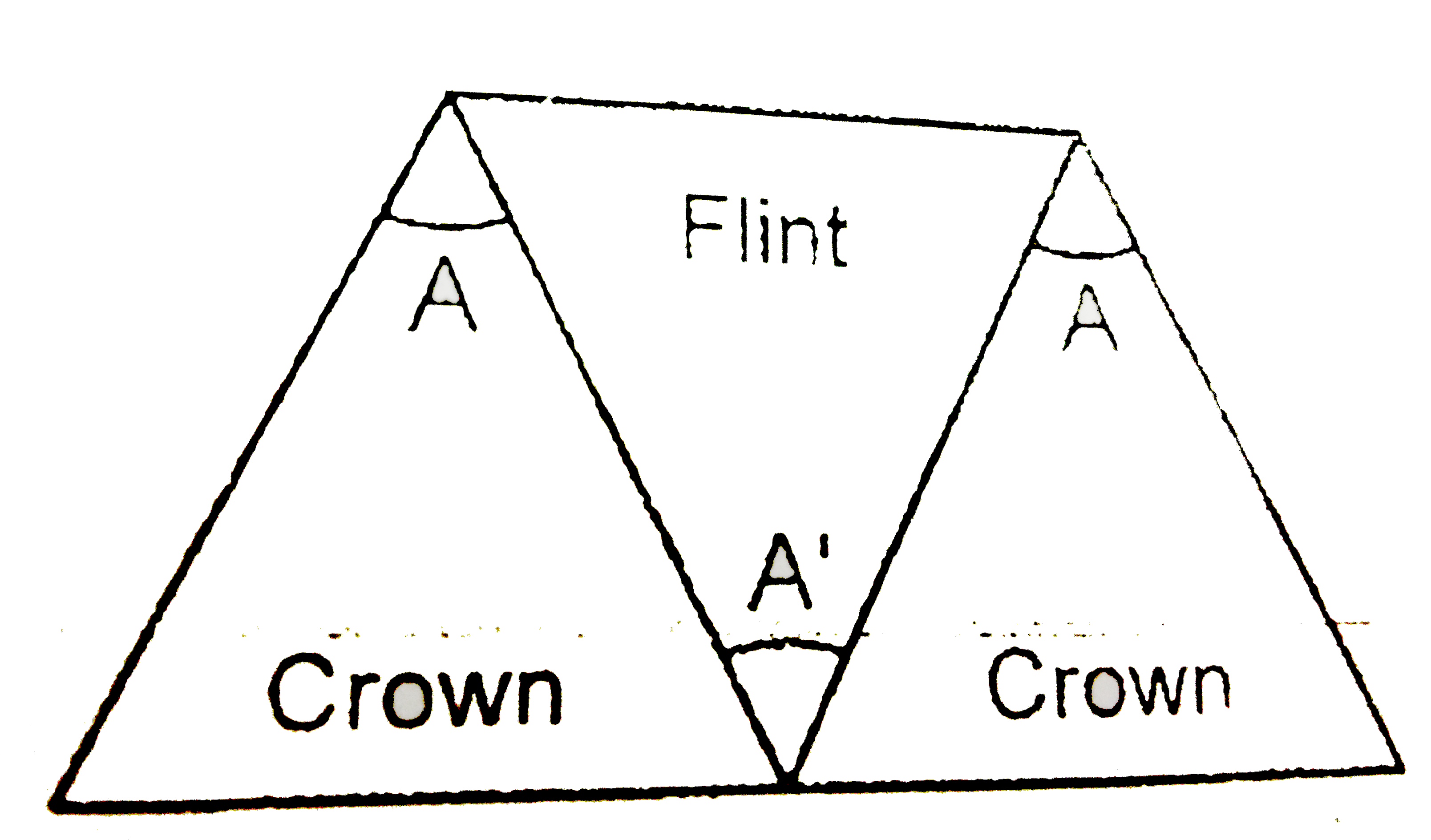Deviation Without Dispersion
Step by step video & image solution for Deviation Without Dispersion by Physics experts to help you in doubts & scoring excellent marks in Class 12 exams.
Updated on:21/07/2023Similar Questions
Three thin prisms are combind as shwon in figure. The refractive indices of the crown glass for red, yhelwo and violet rays are μr,μy and μv respectively and those for the flint glass are μ'r,μ'y and μv respectively . Find the ratio A'/A for which (a) system produces deviation without dispersion (achromatic combination ) and (b) system produces dispersion without deciation (direct vision arrangement).

View SolutionThe refractive indices of crown glass for blue and red light are 1.523 and 1.513, respectively and of dense flint glass, 1.773 and 1.743, respectively. Calculate the dispersive power of the material. What must be the anlgle of a flint glass prism which may be combined with a crown glass prism of angle 5∘ so that the combination produces dispersion without deviation? What dispersion does the combination produces?
View Solution
Knowledge Check
In the visible region the dispersive powers and the mean angular deviations for crown and flint glass prisms are ω',ω' and d,d respectively. The condition for getting deviation without dispersion when the two prisms are combined is
A√ωd+√ω'd'=0Bω'd+ωd'=0Cωd+ω'd'=0D(ωd)2+(ω'd')2=0In the visible region the dispersive powers and the mean angular deviations for crown and flint glass prisms are ω',ω' and d,d respectively. The condition for getting deviation without dispersion when the two prisms are combined is
A√ωd+√ω'd'=0Bω'd+ωd'=0Cωd+ω'd'=0D(ωd)2+(ω'd')2=0A crown glass prism of refracting angle 6∘ is to be used for deviation without dispersion with a flint glass of angle of prism α . Given : for crown glass μr=1.513andμv=1.523, for flint glass μr=1.645andμv=1.665. Find α
A3∘B4∘C4.5∘D5∘
When a white light passes through a hollow prism, then there is dispersion but no deviation deviation but no dispersion no dispersion and no deviation dispersion and deviation both
View SolutionTwo prisms A and B are in contact with each other have angular dispersions of 20and 40 respectively.The dispersive power of A is 0.002 .If the combination produces dispersion without deviation the dispersive power 'B' is
View SolutionTwo prisms A and B are in contact with each other have angular dispersions of 2^(0) and 4^(0) respectively.The dispersive power of A is 0.002 .If the combination produces dispersion without deviation the dispersive power 'B' is
View SolutionWhy should we measure dispersion about some particular value? Do the range and quartile deviation measure dispersion about some values?
View SolutionDispersion Without Deviation
View Solution
